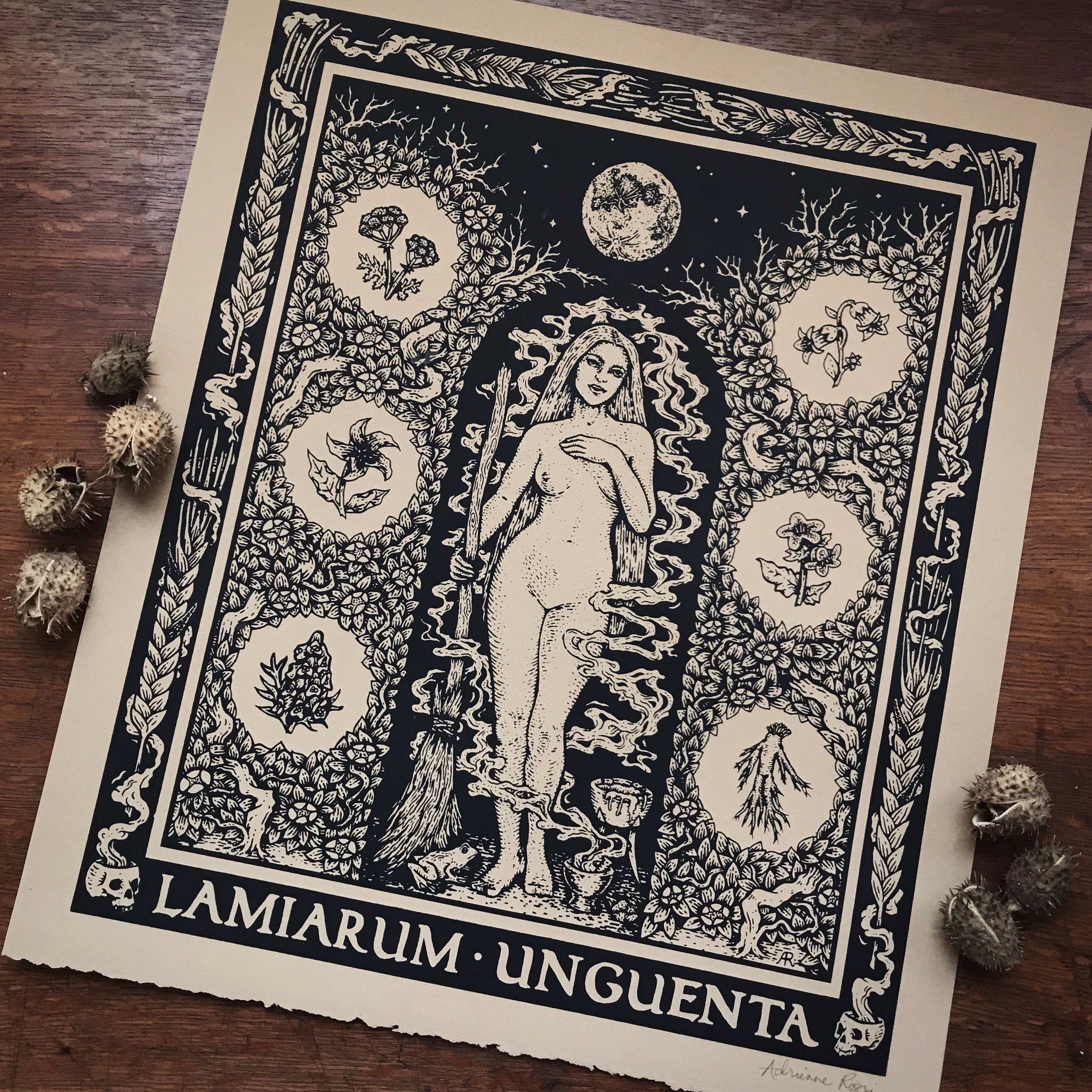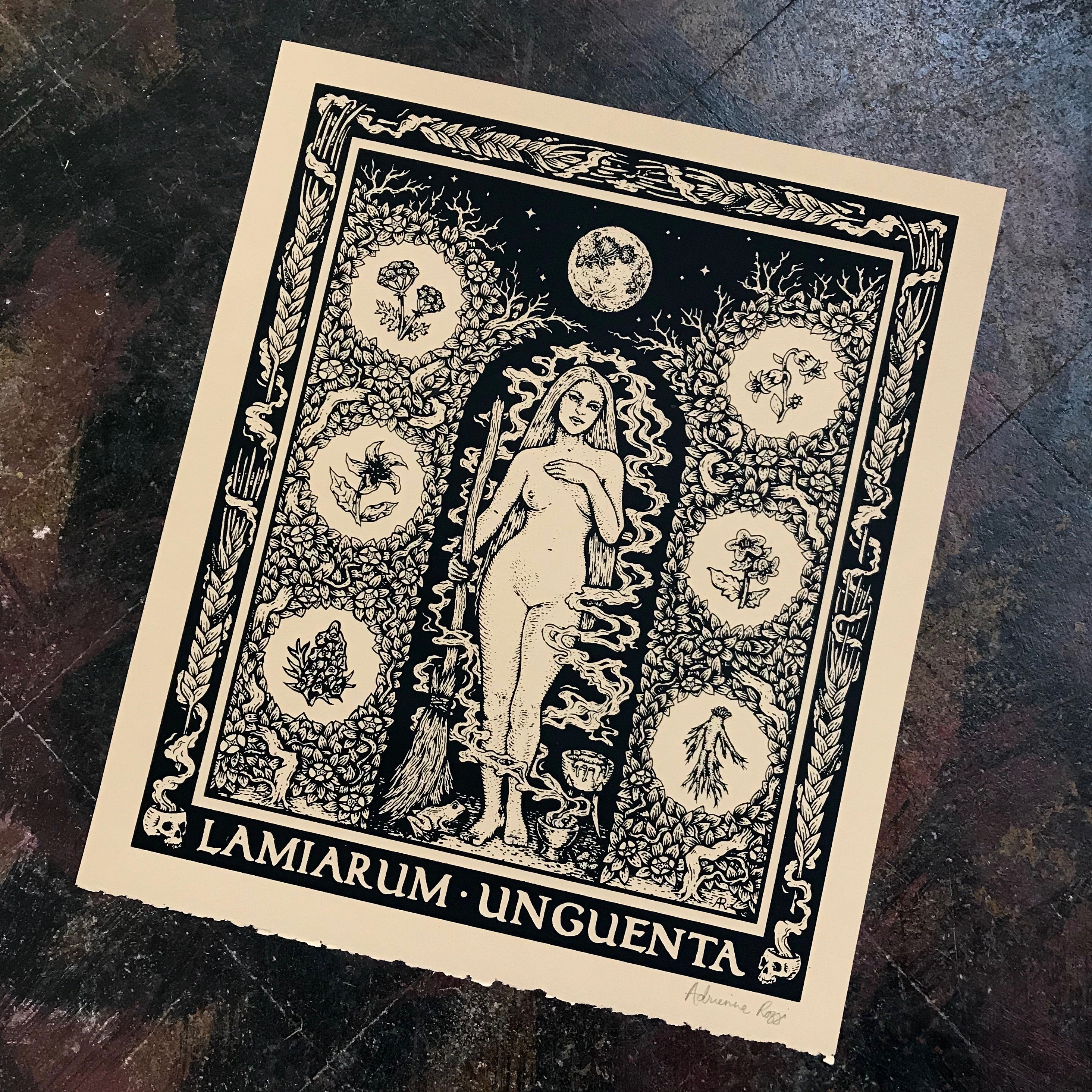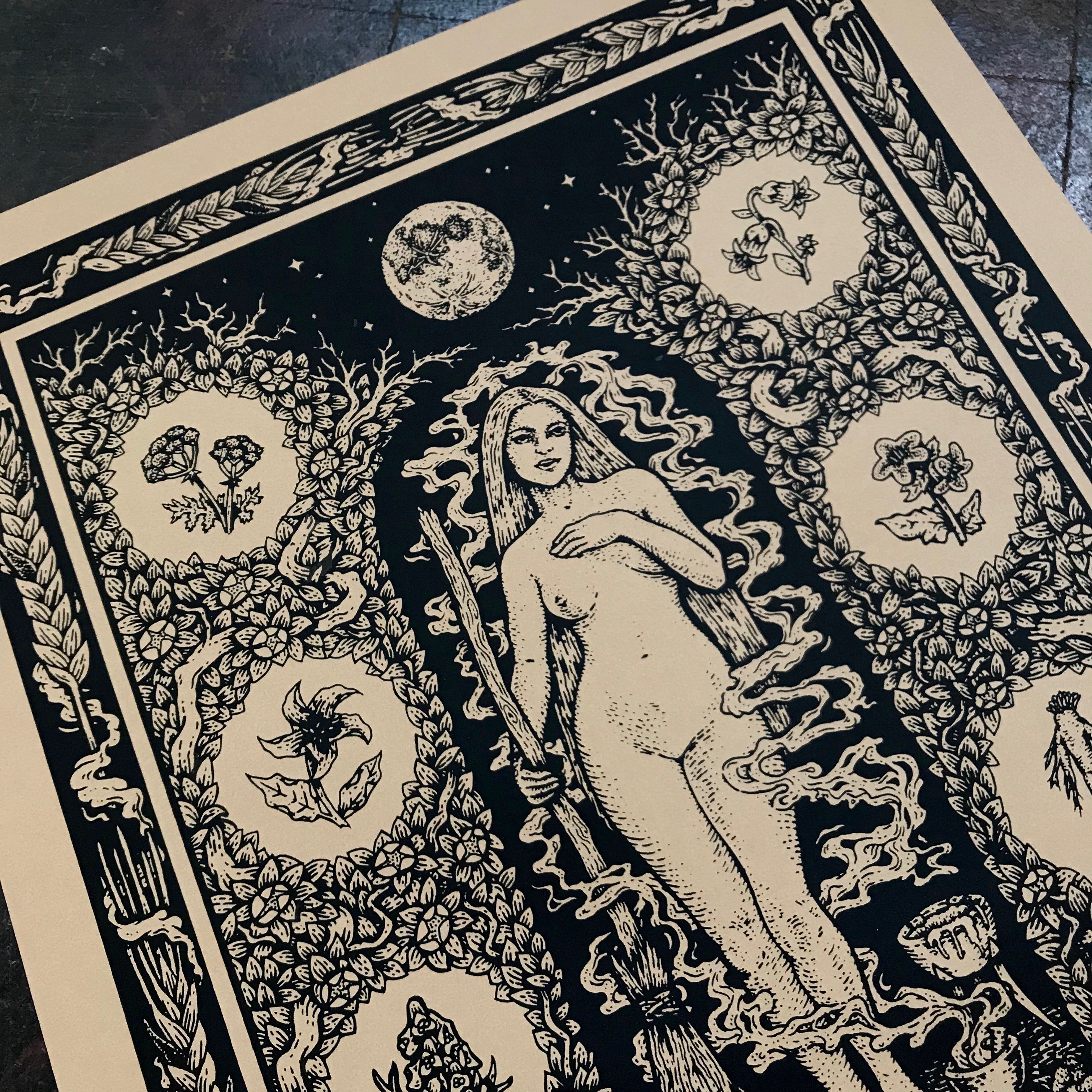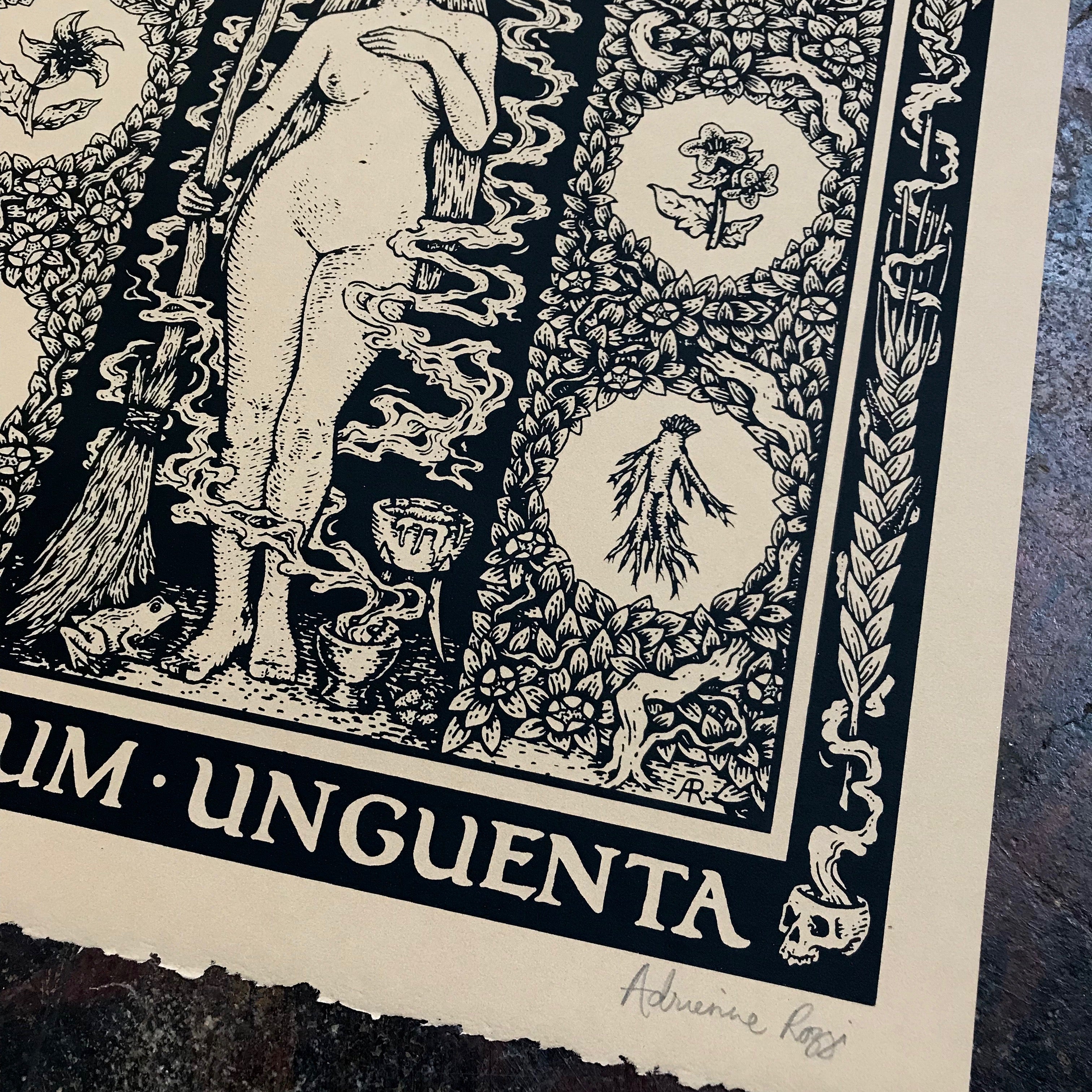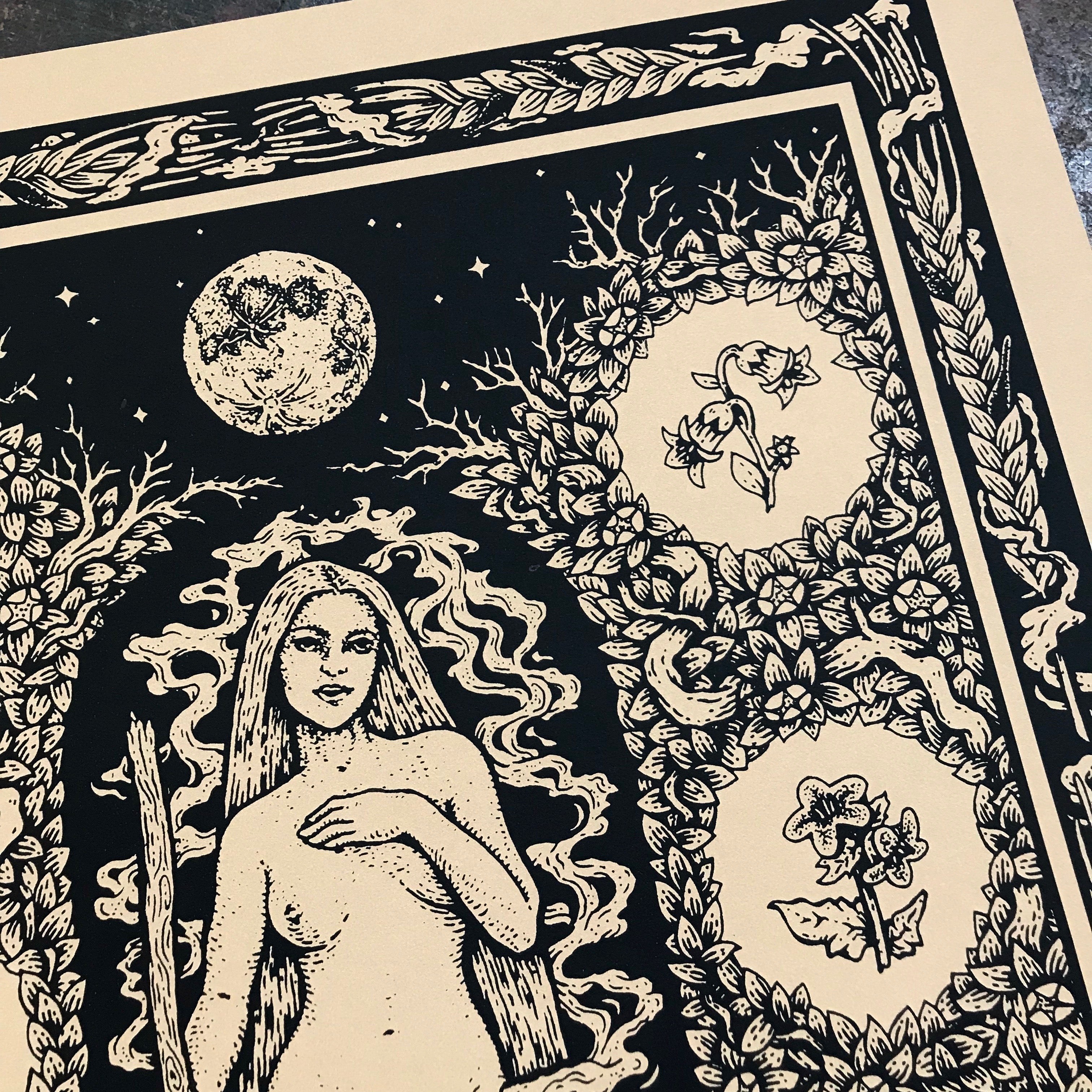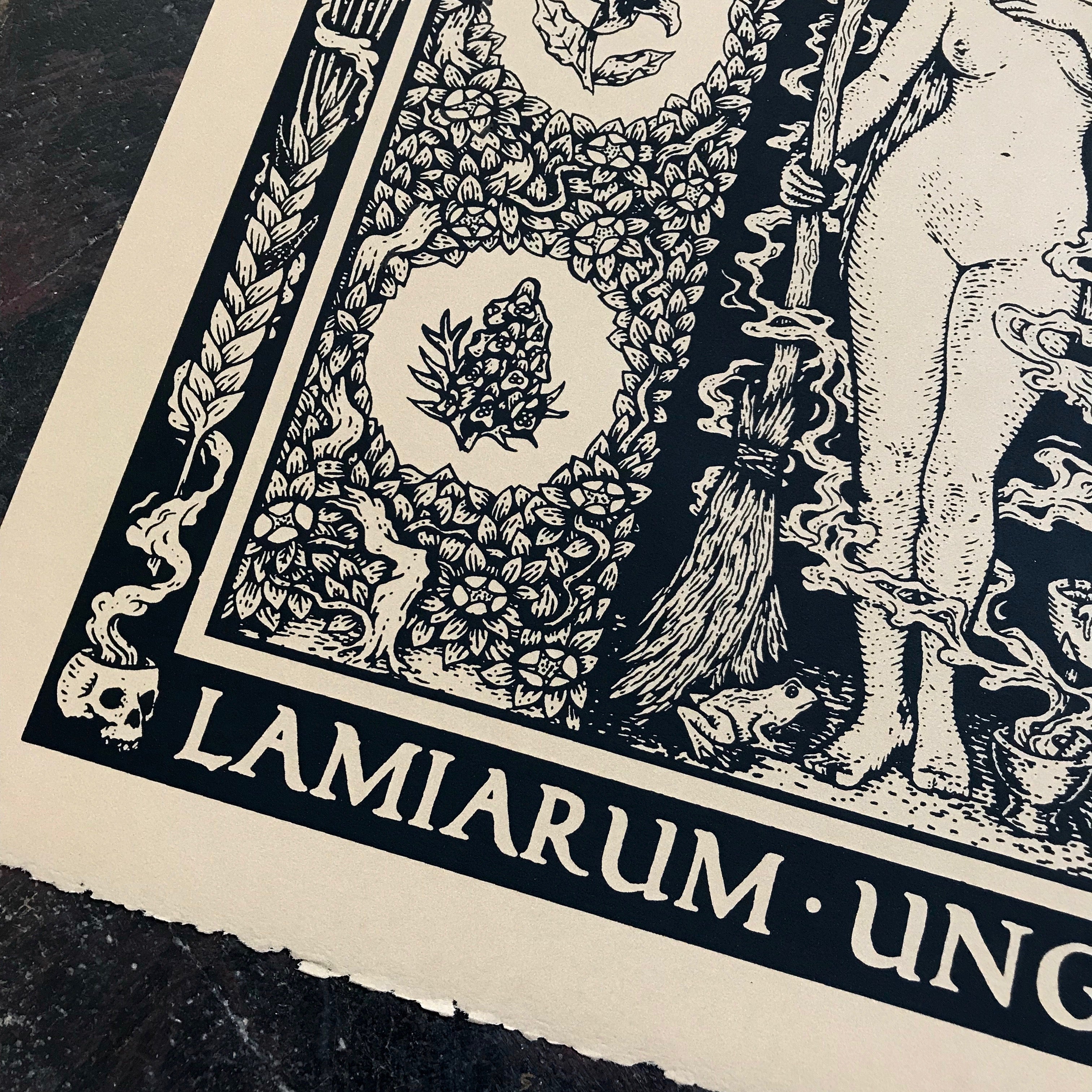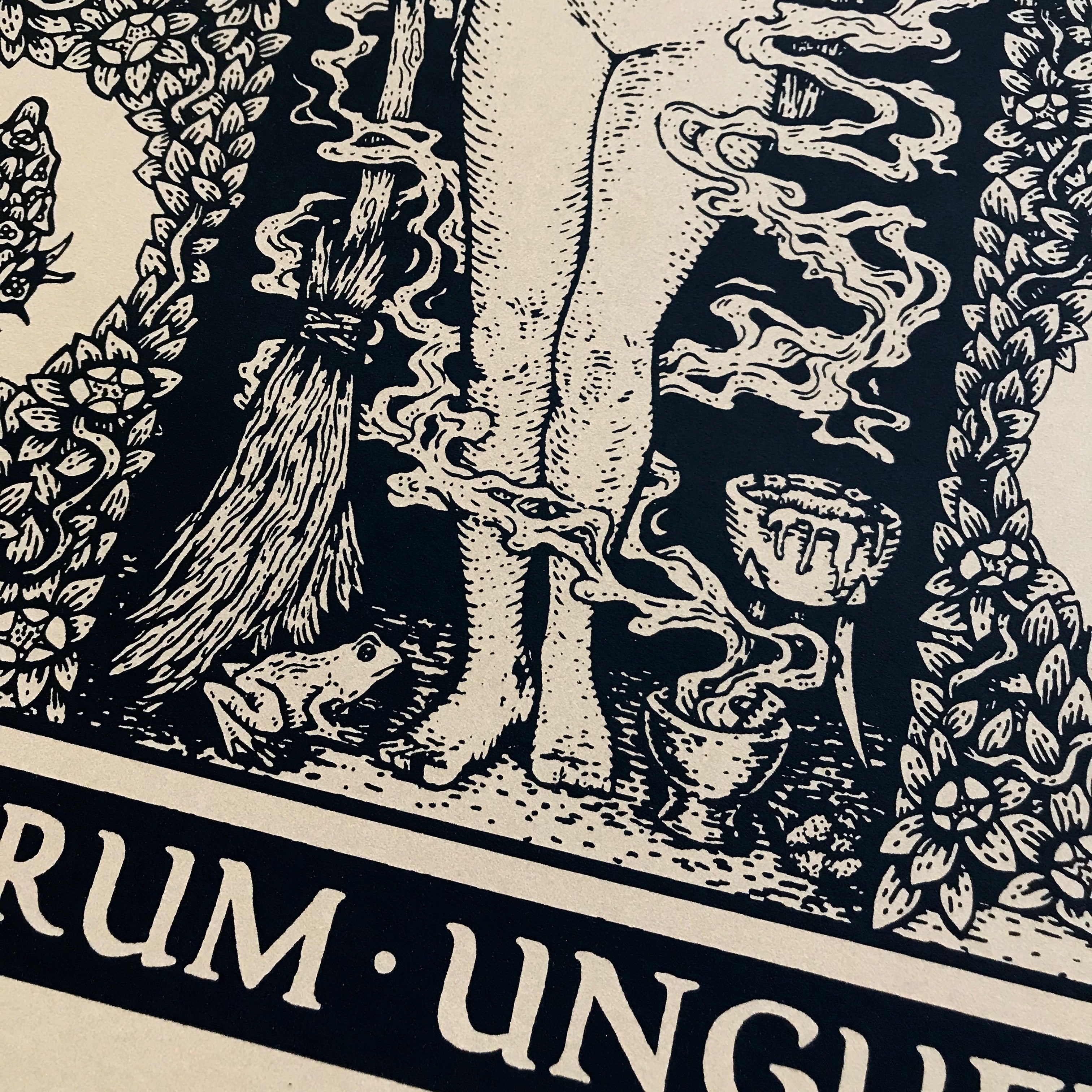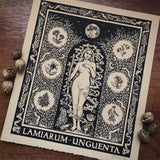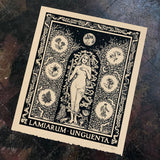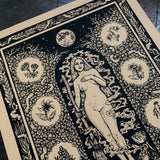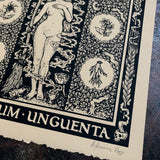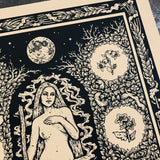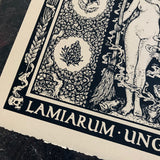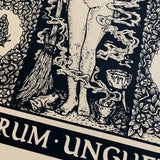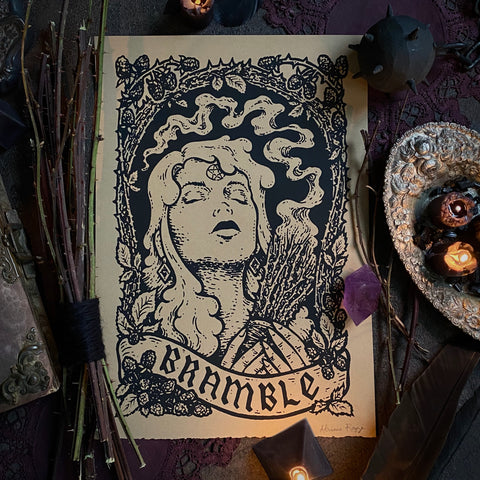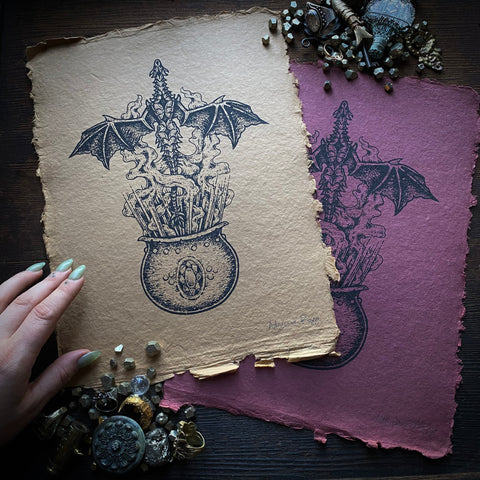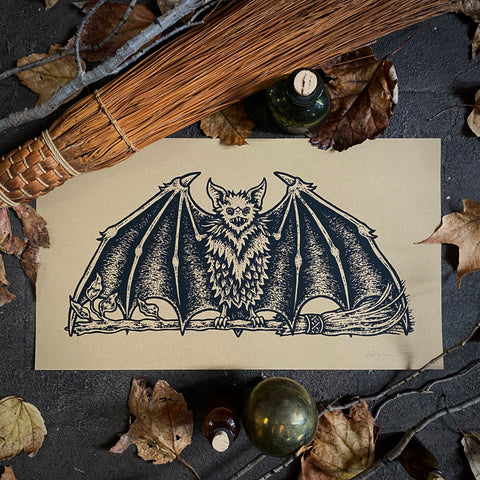Lamiarum Unguenta screen print
$ 70.00
This product is currently sold out.
Lamiarum Unguenta, meaning “witches’ ointment,” is a paste made primarily from psychoactive plants in a base of animal fat and used to aid in what is called night flight. A few of the most consistent plant ingredients found in texts on the subject are Poison Hemlock (Conium maculatum), Datura (Datura stramonium), Monkshood (Aconitum spp.), Belladonna (Atropa belladonna), Henbane (Hyoscyamous niger), Mandrake root (Mandragora officinalis), and Ergot (Claviceps purpurea). Each of these plants are known collectively as “witch’s weeds.”
Witch’s ointments first showed up in text at the beginning of the 15th century, during the formation of the modern witch archetype. This special ointment was generously applied to the skin, allowing the psychoactive effects of the poisonous plants to induce soporatum (deep sleep) and elevate the mind to a trance-like state in which astral projection may be achieved. This type of travel allows the body to remain asleep as the conscious soul roams feely. It is believed that witches used astral travel to “ride the sky” alongside the goddess Diana. This “night flight,” also referred to as “spirit flight,” is just one attribute that contributed to the modern witch archetype we have today. At the time, inquisitors and demonologists constructed their own conceptions about witchcraft and attached diabolical implications to otherwise harmless folk practices. Psychoactive plants quickly became a tool of maleficium, or “evil magic,” in the eyes of church authorities. As this theologically-motivated stereotype crystallized, the idea of flying ointments and spirit flight grew to include the witches’ Sabbat. According to church authorities, witches would fly to satanic gatherings alongside demons to take part in rituals led by the devil himself. In the short span between 1430 to 1450 overzealous theologians turned wise women into devil-worshippers and folk magik into a new form of heresy.
Also during this time, many literary books on the topic of witches were released. With each text came new embellishments, more outrageous than the next, until the new witch stereotype solidified in The Malleus Maleficarum written by Heinrich Kramer. Known in english as The Hammer of the Witches, the Malleus Maleficarum is a treatise on the prosecution of witches and is now one of the most infamous books of the 15th century. When first published, the treatise brought the subject of witchcraft to the forefront, eventually sparking hundreds of murderous witch-hunts in the centuries to follow.
Over hundreds of years, the stereotype established by the Malleus Maleficarum has been continually romanticized, evolving into the most prominent conception of the witch we have today, known as the Satanic Witch. The church-spawned Satanic witch is a malicious, broom-riding hag who consorts with the devil, who holds a bloodlust for infants and a penchant for evil mischief. Although this portrayal is extremely embellished, it is important to note that the origins of this stereotype are rooted in genocide, prejudice, and hate. However, centuries of demonization have led to a renewed interest in the mysteries of witchcraft, revealing a deeper, multi-faceted, feminine icon. After all, in the most simple sense, the witch is a personification of the divine female. She has existed as long as civilization itself and will continue to fascinate the masses throughout all of her incarnations.
Lamiarum Unguenta is original artwork, drawn and screen printed by Adrienne Rozzi. Printed with black ink on kraft-toned Stonehenge archival paper with a deckle edge. Signed by the artist.
Measures 15" x 17.5"
Please refer to last photo for most accurate portrayal of paper color.
As always, please review the FAQ page before every purchase.

